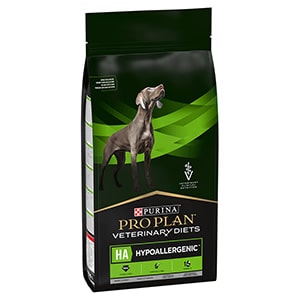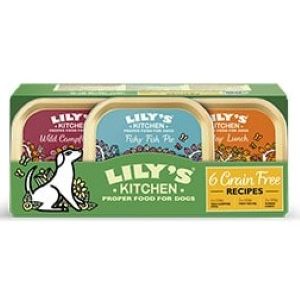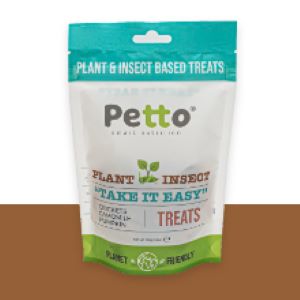Dogs, like humans, can have food allergies or sensitivities that can cause various health problems. If your dog is showing signs of food intolerance, such as itching, scratching, licking, vomiting, diarrhea, or ear infections, you might want to consider switching to hypoallergenic dog food. This is a type of dog food that avoids the most common food ingredients that can trigger allergic reactions in dogs.

Key Takeaways
- Hypoallergenic dog food is a type of dog food that avoids common food allergens in dogs, such as dairy, beef, chicken, eggs, soy, and wheat gluten.
- Hypoallergenic dog food can benefit dogs with food allergies or sensitivities by reducing symptoms, improving digestive health, enhancing skin and coat health, managing weight, and boosting overall well-being.
- Hypoallergenic dog food should be introduced gradually and carefully to your dog’s diet, with the guidance of a vet.
You Might Also Like:
What Is Hypoallergenic Dog Food?
Hypoallergenic foods are special foods made for dogs that show allergic reactions to normal foods and require foods that will not affect their stomach.
“The most common food allergens in dogs are proteins, especially those from dairy, beef, chicken, chicken eggs, soy, or wheat gluten. Each time a pet eats food containing these substances, the antibodies react with the antigens, and symptoms occur”, suggests Dr. Ryan Llera from VCA Hospitals.

Virtually any food ingredient can produce an allergy, however. Proteins are the most common culprits but other substances and additives can also be responsible.
Hypoallergenic dog food usually has fewer ingredients, uses protein sources that are not common in regular dog food, and may not have grains or gluten to avoid possible allergens[1]. The aim is to give a healthy and safe diet that helps the overall health and well-being of dogs with dietary sensitivities.
However, it’s important to talk to a vet to find out and treat any allergies your dog may have. Here are some symptoms of allergy[2]:
- Skin Inflammation
- Itching
- Other Skin Issues
- Diarrhea
- Constipation
- Vomiting
- Colon Inflammation
- Ear and Paw Infections
- Eye Problems
Other more subtle changes can also occur, including hyperactivity, weight loss, lack of energy, and even aggression. If you find any of the above symptoms in your dog then kindly consult with the vet.
Benefits of Hypoallergenic Dog Food
After all, there is a silver lining here too, there are certain benefits of hypoallergenic dog food for dogs that are allergic. Key advantages are mentioned below:

- Fewer Symptoms: Common allergens, such as grains, certain proteins, or artificial additives, are avoided in hypoallergenic dog food. This can help prevent allergic reactions and ease symptoms like itching, skin rashes, and gastrointestinal issues by removing these triggers.
- Enhanced Digestive Health: Digestive problems may affect dogs that have food allergies or sensitivities. Hypoallergenic dog food usually has ingredients that are easy to digest, which can improve nutrient absorption and digestion health.
- Improved Skin and Coat Health: Some dogs have allergic reactions that make their skin itch and their fur lose its shine. A special kind of dog food that does not trigger allergies and has a lot of vitamins and healthy fats can help improve their skin and coat health.

- Weight Management: Food allergies can make some dogs gain weight because they cause swelling or make them eat more. A type of dog food that avoids allergens and provides balanced nutrition can help keep their weight healthy.
- Supports Overall Well-being: A dog’s health and vitality can improve when they eat food that matches their specific needs. They can avoid the problems caused by allergens and enjoy a better quality of life.
Hypoallergenic dog food offers several benefits, such as improved skin health and reduced allergic reactions. As you explore these advantages, remember that maintaining freshness is key. Questions like “how long can wet dog food sit out” are vital to address.
Ensuring that your dog’s food is consumed within safe timeframes helps preserve its nutritional value and minimizes the risk of contamination
How to Shift to Hypoallergenic Dog Food?
You should change your dog’s food to hypoallergenic slowly and carefully to make sure they adjust well and benefit from it. Here are some steps you can follow to help you with the change:
- Consult the Vet: It is important to seek professional advice from your vet before changing what your dog eats. They can help you determine if your dog needs hypoallergenic dog food and suggest the best choices based on their specific food allergies or sensitivities.
- Recognize Triggers: Consult your vet to find out the specific allergens or ingredients that your dog should stay away from. This will help you pick the right hypoallergenic dog food that suits their nutritional needs.
- Choose the Correct Hypoallergenic Food: Choose a high-quality hypoallergenic dog food that matches your veterinarian’s suggestions. Look for diets with few ingredients and uncommon protein sources, options without grains, and natural additives.
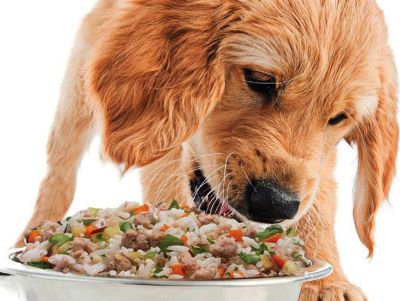
- Transition Gradually: Start feeding your dog the new hypoallergenic food gradually. Begin by adding a little bit of the new food to their regular food, slowly increasing the amount of the new food over several days or weeks.
- Monitor Your Dog: Watch how your dog reacts to the new food. Look for any changes in their allergy symptoms and any possible negative effects. If you see any problems, talk to your vet for modifications.
- Avoid Treats: Don’t give your dog any treats or human food that might have allergens in them while you are changing their food. Only feed them the new hypoallergenic food so you can see how it affects them. If there are any issues, contact your vet for changes.
- Be Patient: Your dog’s body might need some time to get used to the new food. Don’t rush the process and wait for enough time to see how it works.
- Provide Fresh Water: Make sure your dog always has fresh water to drink, especially while you are changing their food. Drinking enough water is very important for their health.
One should keep in mind that hypoallergenic food is not necessary for all dogs, and a veterinarian should be consulted before changing their diet. If you’re looking to transition your dog’s diet, especially in the context of the UK, it’s worth exploring not just dry hypoallergenic dog food, but also the best wet dog food UK options available.
Alternatives
If you choose to feed your dog with different or homemade hypoallergenic dog food, you need to consult. Here are some general tips to think about:

- Grain-Free Options: You can use carbohydrate sources that do not contain grains, such as sweet potatoes, quinoa, or rice.
- Protein Sources: Choose protein sources that your dog is not familiar with, such as deer, bunny, or duck meat. Keep away from chicken, beef, or lamb, which are often allergens. As you adjust their diet, remember to consider the portion sizes of various foods, including how much wet food to feed a dog.
- Fresh Veggies: Fresh, dog-friendly vegetables like carrots, green beans, or pumpkin are good to include, as they offer essential vitamins and fiber.
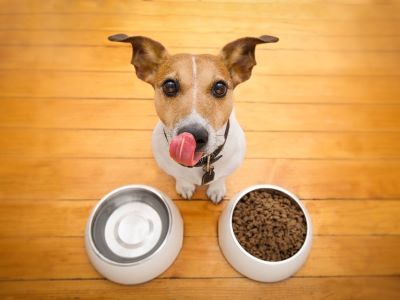
- Healthy Fats: You can add healthy fats such as coconut oil or flaxseed oil, which help your dog’s skin and coat health.
- Calcium: Make sure the recipe has enough calcium and essential nutrients. Your vet can advise you on suitable supplements if required.
- Dodge Allergens: If your dog has multiple allergies, so be careful not to introduce new ingredients. Use only ingredients that you know are safe.
Mix these foods according to the nutritional needs and portion size. Always consult with the vet before switching to any new food.
FAQs
What Does Hypoallergenic Dog Food Mean?
Hypoallergenic foods are made from ingredients that are less likely to cause allergies and intolerances, as well as using single proteins. This is to help isolate the ingredient your dog is allergic to if they don’t agree with that particular recipe.
What Is the Difference Between Normal Dog Food and Hypoallergenic Dog Food?
Hypoallergenic dog food is a diet specifically designed for pups with sensitive stomachs that get upset by specific ingredients. Compared to traditional dog foods, hypoallergenic dog foods are tailored with protein sources and other direct sources of nutrients that will avoid triggering your canines’ antibodies.
What Are the Top Three Food Allergies in Dogs?
The most common food allergens in dogs are proteins, especially those from dairy, beef, chicken, chicken eggs, soy, or wheat gluten. Each time a pet eats food containing these substances, the antibodies react with the antigens, and symptoms occur. Virtually any food ingredient can produce an allergy, however.
What Proteins Are the Best Proteins for Dogs With Allergies?
Grubs also known as Black Soldier Flies Larvae. Black soldier flies (BSF) are a form of insect protein, and BSF-based foods and snacks have become a favorite among dogs with digestive issues. Duck. Kangaroo. Venison. Rabbit.
What Do Vets Recommend for Dog Allergies?
Often veterinarians will prescribe antihistamines and corticosteroids to reduce allergy symptoms. Antihistamines reduce allergic reactions in dogs by blocking the release of histamine within mast cells, which is the source of that incredibly itchy effect.
Summary
These were some tips for dogs who are hypoallergenic and what are their nutritional needs and how are we supposed to provide them.
Observe their diet and reactions always and if you ever find any abnormality then contact the vet instantly.
By following these steps you will make sure the health and happiness of your dog!
Reference:
- Coile, C., Ph.D. (2023). Can Dogs Eat Wheat And Other Grains? American Kennel Club.
- Jusch. (n.d.). Food allergies in pets. FOUR PAWS International – Animal Welfare Organisation.
